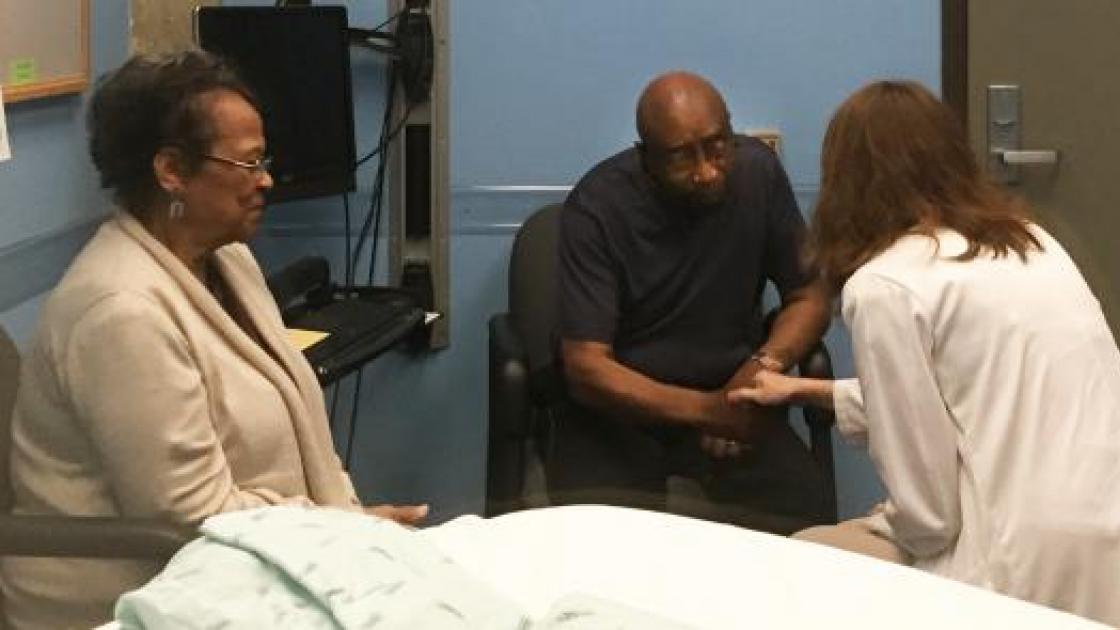
FAQ
What is a standardized patient?
A standardized patient is a person who has been coached to accurately and consistently portray the history, personality, physical findings, and emotional state of an actual patient at a particular point in the patient's illness. Standardized patients are interviewed and examined by medical students, just as you would by your family doctor.
What does a standardized patient do?
Standardized patient encounters are similar to visits with your doctor. The exception is instead of presenting your own medical condition, you are coached to present information related to a specific patient case. During a typical patient encounter, medical students take a medical history (asking questions about your condition) and perform a physical examination. The history taking usually requires your memorization of information such as: patient name, age, occupation, the problem being experienced/described in detail. Other information may include family history or past medical information related to the case.
Standard examinations conducted by students include:
- vital signs (temperature, heart rate, blood pressure, breathing rate)
- ear/nose/throat exams
- eye exam
- chest/lung/heart exams
- abdominal exam
- neurological exam (testing muscle strength, reflexes, etc.)
What skills are needed to be an effective standardized patient?
- An ability to memorize a limited amount of case information such as medical history & symptoms.
- Be reliable and punctual.
- An ability to portray a case in an appropriate manner. For example, a case may require a standardized patient to cough, exhibit pain in a
particular region, have difficulty walking, or appear emotionally upset. - Standardized patients must be agreeable to being examined by first- through fourth-year medical students. Trained staff supervise the encounters.
- Be at least 16 years of age.
Why are standardized patients used in medical education?
Standardized patients provide medical students the opportunity to develop and practice patient history taking and examination skills in a controlled learning environment. Clinical faculty and staff are on hand to assist in teaching skills. The comfortable environment helps students learn and practice skills. Students can learn skills without compromising the "actual" patient because you, the patient, are not really ill. Multiple patients can be coached to portray the same case, which allows each student to receive the same experience.
How many students will I work with at a time?
In the patient role, you may see students on a one-to-one basis or there may be a group of students (up to 8) working with you.
Who trains standardized patients?
SIU School of Medicine faculty and staff train standardized patients to simulate medical problems. Training occurs on-site at both medical school campuses, Springfield and Carbondale. Patients also study case materials at home. Cases will either be sent to you prior to the training session along with a parking permit and a campus map (Carbondale) or will be handed out at the day of training (Springfield). On occasion, patients with actual medical findings or conditions will be needed. Allowing students the ability to see actual findings rather than simulated ones.
How often would I work?
Patients are needed on a variable basis, usually not more than once or twice per month. Each case requires approximately 1-3 hours of training time. Student sessions run from 2-8 hours. Break time is scheduled between students on the longer simulation days.
How much time does it require to be a standardized patient?
Each simulated case requires approximately 1-3 hours of paid training. The time spent with medical students varies depending on the case, the number of students to be seen, and your agreed upon commitment.
Why should you become a standardized patient?
- By becoming a standardized patient, you will have an opportunity to be involved with new physician
training. - Beginning the first year of medical school, standardized patients help teach students the importance of eye
contact, thoroughness, compassion, and respect. - It is an interesting way to earn extra money, improve personal knowledge, and empowers one in own healthcare.
How can I apply?
You can apply online. If you live in the Springfield area and you have problems opening the form, contact Dr. Amelia Frank, afrank42@siumed.edu. If you live in the Carbondale area and cannot download the form, contact Vicky Dasher at vdasher@siumed.edu. Potential standardized patients will be asked to attend a screening session where they are coached to simulate a brief patient case. Successful applicants are then hired as extra help employees.
